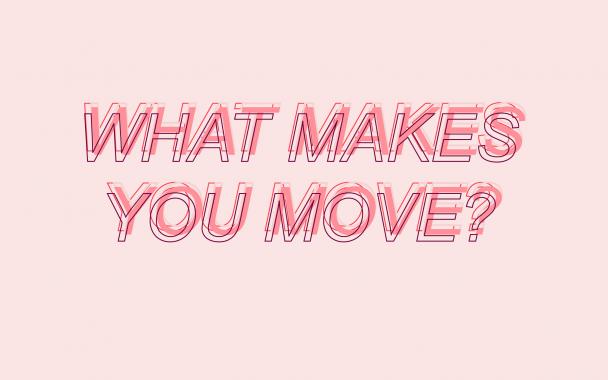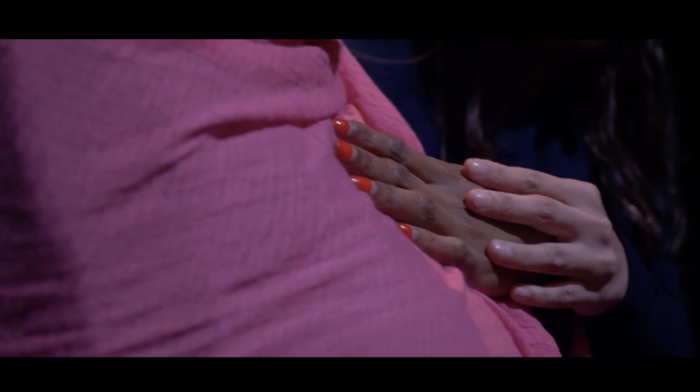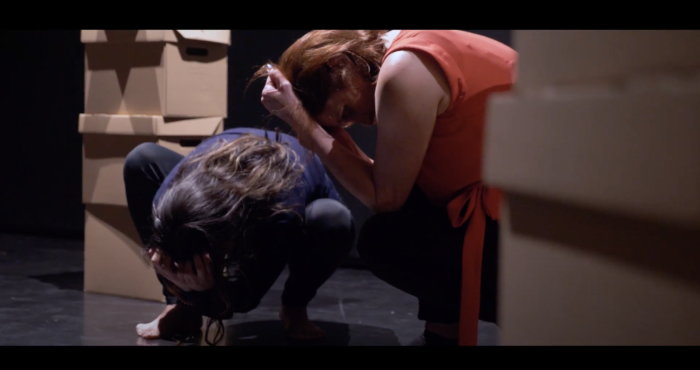Interview | Arts Catalyst in conversation with Erene Kaptani
Body-inclusive methods for self and social knowledge: Gendered and racialised bodies in public encounters.
Erene Kaptani is an anthropologist, participatory theatre artist and dramatherapist with expertise in applied theatre/arts for social research, community building and public impact. She devises performances and arts events designed to question constructions of identities, and institutional and public communications. In the interview below, she discusses her creative practice and research into approaches to inclusive co-creation.
AC: Your work addresses how policies and infrastructures connected to migration and citizenship affect individuals and communities in the UK, by situating artistic and political practices in the mobilisation of bodies. What forms of injustice does your work seek to challenge?
As a creative researcher and artist, one significant ethical tension I have encountered relates to top-down research methodologies for examining class, race and power, which, with its extractive and non-reciprocal approach - often enacted through interviews and focus groups- undermines the very aims of the research itself. If instead we understand knowledge production as a collaborative and holistic process which validates the lived experiences and capacities of subjugated bodies (POC, low income, queer, disabled), then one needs to find other possible creative means and conditions to produce this knowledge.
“a top-down approach to knowledge and ethics runs the risk of perpetuating detached, disembodied, extractive, hierarchical and power-driven relationships between researchers and the ‘researched’”
A top-down approach to knowledge and ethics runs the risk of perpetuating detached, disembodied, extractive, hierarchical and power-driven relationships between researchers and the ‘researched’. From my perspective, the means of data generation for social research currently exclude the creative body and its creative capacities. Consequentially, they exclude the self tout court and as the creator of knowledge. Instead, there is a need to work with the body as an active knower and not only analyse the body as a discursive site.
In my research and artistic practice I look at social inequalities and issues that reside in black and white feminists; in their similarities and differences of opinion and focus, based on their own situated experiences of visibility and invisibility.

Still from a film documenting Butterfly Effect: I was, I wish, I am – performance against gender violence, 2020
Yet, I’m interested in exploring the common ground that brings together women and other subjugated positionalities of classed, queer and disable groups, whom I approach as knowing subjects who embark on a process of co-production and who make use of the knowledge produced for themselves and the groups they are involved in.
The projects I have been a collaborator of and those which I’ve led are concerned with two interlinked ethical concerns: the first is the disappearance of the participants’ bodies as a site of knowledge production, and the second is the process of building their individual and collective capacities as reflexive and active knowers. Knowing here is viewed as creation therefore action.
Data generation is normally conducted through methods such as interviews, focus groups or visual elicitation methods. These methods do not increase the possibilities for participants to gain control of the stories they want to tell: to be able to negotiate power differentials with others, including the researcher; to be able to create, direct, intervene and reflect on their stories, hence connect them with their everyday lived experiences in a transformative way. I consider these not merely as methodological or epistemological concerns, but also as core ethical issues.
With feminist epistemologies in mind, we have to ask ‘What is the aim of knowledge? What and who is excluded from the production of knowledge? How can we develop a research practice whereby excluded bodies can become co-creators of knowledge? How can this knowledge connect to their lives? According to Annemarie Mol’s book ‘The Multiple Body’ (2002), knowledge is not about mirroring the world but about intervening, and finding better ways of living within it. If knowledge is not merely a contemplative practice, we then need to view research ethics differently and ask how we can integrate methods that can enable self-definition, agency and the validation of difference, thus which can bring about transformative praxis (Freire, 1970, Codesal et all, 2020).
“we have to ask ‘What is the aim of knowledge? What and who is excluded from the production of knowledge? How can we develop a research practice whereby excluded bodies can become co-creators of knowledge? How can this knowledge connect to their lives?”
In response to this, a different construction and dissemination of knowledge that comes from the Global South (Santos, 2016) and indigenous knowledge (Smith, 1999) is offered, which takes the form of a participatory performance practice that is relational, reciprocal, collectively generated, communicated corporeally and orally, openly shared, and becomes an informal innovation through collective creation (Tilley, 2017).
AC: Can you tell us a bit more about the methodologies you work with as a researcher and as an artist?
In my current research based in Arts Catalyst and at the University of Greenwich, I have been interested in the ways in which racialised women’s bodies in particular are experienced as negative, deficient and ‘different’ to the ‘norms’ of white Eurocentric bodies. At Arts Catalyst, I led ‘What Makes you Move?’, a series of six participatory workshops based on a combination of methodologies - including Lecoq movement based and forum theatre - that placed the participants’ body as an active and reflective agent thus creating a space of praxis, action and reflection.
The aim of the workshops was to draw attention to the co-creators’ bodies, and the spaces which could inform the participants’ gendered and racialised experiences of encounters in public and shared spaces.

Here, my research approach was not only based on generating stories but also on responding to the participants’ self-interests and particular ways of being and becoming in the data collection process – for instance I used maps about everyday routes and places, movement led by natural elements or connected to everyday life, as well as Image Theatre and Forum Theatre (see more details below).
A description of the research and creative process is provided below:
I start with theatre games and exercises. Then we create maps about routes to places where one feels or does not feel comfortable and at ease. This is followed by movement exercises based on the four elements, which are then connected to regions on the map, to draw attention to public or shared spaces, and how gendered and racialised bodies move and feel within them. These movement exercises are used to generate particular qualities, images, emotions and states of being that can then inform the theatre creation. The participants move through the qualities of the four elements of fire, air, earth and water and then choose the ones they find most interesting and go back to their self-created maps of everyday routes to add the elements to the depicted places. That embodiment of natural elements, according to the French actor and theatre practitioner Jacques Lecoq (2000), triggers emotions, senses and physical qualities that can be used to improvise characters and situations. The participants/creators talked about what each element meant for them in relation to their experiences of places and social encounters
“that embodiment of natural elements, according to the French actor and theatre practitioner Jacques Lecoq (2000), triggers emotions, senses and physical qualities that can be used to improvise characters and situations”
In Image Theatre (Boal, 1979), each participant/creator creates images of a concept or a theme, or a particular incident, or an experience by ‘sculpting’ their bodies in the image. The participants then can move within the image at the same time and in slow motion. In doing so, different interactions and relations are taking place. Members of the group take turns witnessing the images by stepping outside the image and adding later their own verbal interpretations. The body moves around other bodies and with its movement changes its relationship with and responses in the space. In doing so, the body proposed new forms of knowledge by intervening in the existing reality and by creating other ‘images’ of reality, a process which called ‘Metaxis’ (Boal 1995, Linds, 2006, Perry 2012). In this process, the creative participant watches the movements, while seeking to actively form other possibilities of inhabiting and making meaning of the initial image of the participants’ lived experiences. These corporeal and interactive installations can be used as a projective focal point where the participants can address and analyse social relationships (Kaptani & Yuval-Davis, 2008). These moving images allow non-verbal elements, especially movement, to become the priority, and to create affective and visual understandings of the themes portrayed. Words related to the different ‘characters’ in the image can be added to support the transition to Forum Theatre, where now an oral ‘text’ is added on to the creator’s image based on a narrative shared previously in the group.
Forum Theatre: The Brazilian director and activist Augusto Boal (1979) developed Forum Theatre as part of the Theatre of the Oppressed, based on the principles of collective empowerment and emancipation outlined by Paulo Freire in Pedagogy of the Oppressed (1970). In the latter’s (Freire, 2001: 6) words: “Our conceptualization of a participatory ethics is motivated by a vision for what could be, and the possibilities of addressing asymmetries of power and privilege, including the process of knowledge production’.
The performances are opened up to interventions from other people in the group. The bodies of the new participants who replaced that of the ‘oppressed’ were physically moved to take centre stage via the emotions triggered/evoked by the unjust situation portrayed in a scene. The participants’ bodies transform to spectators’ bodies here as they are crossing positional ‘borders’ from being audience members (witnessing an action) to becoming actors (taking action) and determining (changing) the course of action in the depicted scenario, thus offering possibilities to other bodies to reflect and take new action.

Still from a film documenting Butterfly Effect: I was, I wish, I am – performance against gender violence, 2020
AC: What form of agency have you sought to enact through your work? In what way do you think artistic practice participates in the constitution of such agency?
In my practice and research, agency is enacted through:
- Forging and validating self-definitions through reflection and movement which becomes solidified by group participation.
- Holding spaces for the creation of social knowledge and of knowledge of the self.
- Recognising different social orientations towards racialised bodies and changing the ascribed body positionalities through movement and reflection.
Within these artistic methods, there is always experimentation with the question of how things can happen or be experienced differently. It is this desire for movement as a means of combating inequality that gives the body the impulse to move from being a passive recipient to becoming an active agent, thus materialising different social interventions. Furthermore, this process develops a particular way of knowing in the practice (Allegranti, 2013; Eisner, 1998; Greenwood, 2009; Pink, 2008), co-created by the researcher and research participants in the practiced theatre space.
“It is this desire for movement as a means of combating inequality that gives the body the impulse to move from being a passive recipient to becoming an active agent.”
The rationale behind these theatre-based methods is that have the ability to encourage the expression of lived experiences, to value difference in creative expression, and to contribute to personal, reflective and agential capacities (see Finley & Knowles, 1995, Eisner, 2008; Boal, Kaptani &Yuval-Davis 2008, Nicholson, 2005; Yarrow, 2012).
AC: How do you think artistic and cultural practices can participate in the reinvention of the public sphere – in its institutional and non institutional forms as well as in relation to research and knowledge production? What challenges and/or possibilities does the current crisis create in this process of reinvention?
We are now gathering in the virtual realm, in no land-specific spaces that offer a possibility of extension of bodies. However, the body needs to be in the physical space and the withdrawal from it has made it even more visible that we are emplaced beings. This is a good time to reflect on research and artistic practice. By missing the physical space we have the opportunity to also reflect on who is missing from these places as well as what kind of spatial and interpersonal emplaced practices set the mode of operation for the racialised or subjugated bodies within them.

Still from a film documenting ButterflyEffect: I was, I wish, I am – performance against gender violence, 2020
Reflections from co-creators:
‘it has been so relevant to life, to everyday life. It is not often you have the opportunity and the time to reflect on things, such as race through the body. It is a totally different experience and different insight’.
‘academia has brainwashed me so much that I just thought: how can this be social science? – it can’t be. But then when I look further I am just thinking, this has actually been one of the most interesting experiences of my life, just being in this room week in week out and seeing the changes that I felt’.
Contact Erene via e.kaptani@gre.ac.uk
Website: erenekaptani.wordpress.com
Links to recent projects:
ButterflyEffect: I was, I wish, I am – performance against gender violence, 2020
What makes you Move?, Arts Catalyst, 2019
Youth Matters, Bathway Theatre Project, ongoing
Participatory arts and social action research, The Open University
Migrants creating for the future!, The Open University
Identity, Performance and Social Action Among Refugees, University of East London
References
Bhambra, G. K., & Santos, B. de S. (2017). Introduction: Global Challenges for Sociology. Sociology, 51(1), 3–10. https://doi.org/10.1177/0038038516674665
Boal, A. (1979). Theatre of the oppressed (C. A.McBride & M. O. L.McBride, Trans.).
Mata-Codesal, D., Kloetzer, L, Maiztegi, C. (2020). Editorial: Strengths, Risks and Limits of Doing Participatory Research in Migration Studies. Migration Letters, 17(2), 201–210
DOI: https://doi.org/10.33182/ml.v17i2.934 Received: 14March2020
Collins Hill Collins, P. (1990) Black Feminist Thought: Knowledge, Consciousness and the Politics of Empowerment. New York and London: Routledge
DeVault, M.L. (1997) Personal Writing in Social Science: Issues of Production and Implementation, in R. Hertz (ed.) Reflexivity and Voice. Thousand Oaks, CA: Sage.
Freire, P. (2002). Pedagogy of the Oppressed (30th anniv). New York: Continuum.
Fox, M. (2015) Embodied Methodologies, Participation, and the Art of Research. Social and Personality Psychology Compass. 9. 10.1111/spc3.12182.
Hooks, B. (1994). Teaching to Transgress. New York: Routledge.
Kaptani, E. & Yuval-Davis, N. (2008) Participatory Theatre as a Research Methodology: Identity, Performance and Social Action Among Refugees, Sociological Research Online, 13(5)
Mignolo, W. (2009). Epistemic Disobedience, Independent Thought and Decolonial Freedom. Theory, Culture & Society, 26(7-8): 1-23.
Mol, A. (2002), The Body Multiple: Ontology in Medical Practice, Durham, N. Ca., and London: Duke University Press.
O’Neill, M., Erel, U., Kaptani, E., and Reynolds, T., (2019). Borders, risk and belonging: Challenges for arts-based research in understanding the lives of women asylum seekers and migrants ‘at the borders of humanity. Crossings: Journal of Migration & Culture, 10(1) pp. 129–147.
De Sousa Santos, B., Arriscado Nunes, J., & Meneses, M. (2007). Introduction: Opening Up the Canon of Knowledge and Recognition of Difference. In: B. de Sousa Santos (Ed.), Another Knowledge is Possible: Beyond Northern Epistemologies (pp. xix-lxii). London: Verso
Reynolds, T. (2002) Re-thinking a black feminist standpoint
Ethnic and Racial Studies 25 (4): 591-606 DO - 10.1080/01419870220136709
Savransky, M. (2017). A Decolonial Imagination: Sociology, Anthropology and the Politics of Reality. Sociology, 51(1), 11–26. https://doi.org/10.1177/0038038516656983
Smith, Linda Tuhiwai. (1999) Decolonizing methodologies: research and indigenous peoples London; Zed Books ;
Tilley, L. (2017). Resisting Piratic Method by Doing Research Otherwise. Sociology, 51(1), 27–42. https://doi.org/10.1177/0038038516656992
Torres, E. & Fine, M (2019). Critical Participatory Action Research: A Feminist Project for Validity and Solidarity. Psychology of Women Quarterly 43(4), 433-444 DOI: 10.1177/0361684319865255
Vacchelli, E. (2018). Embodied research in migration studies: Using creative and participatory approaches. Policy Press.
Young, I. (2002) [1990]. Throwing like a girl and other essays in feminist philosophy and social theory. Ann Arbor, Michigan: UMI Books on Demand.
